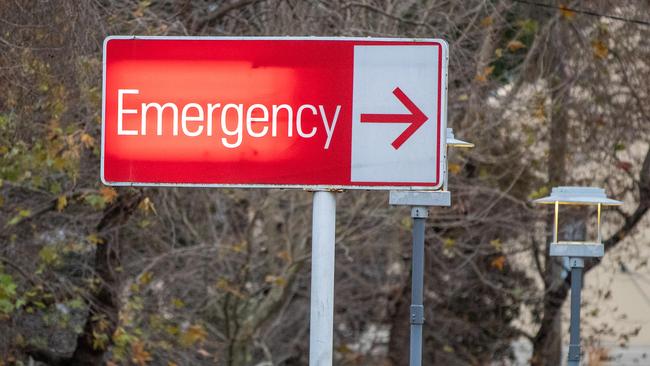Covid-19: Hundreds unable to be admitted at ICUs during pandemic
Intensive care units across the country were unable to admit patients due to inadequate resources during the Covid pandemic.

Intensive care units across the country were unable to admit hundreds of referred patients because of inadequate resources during the Covid-19 pandemic, with doctors and nurses forced to care for some patients who needed critical care on wards.
Those who could not get beds in ICU included patients suffering health emergencies, those with deteriorating conditions and those recovering from serious elective surgery, while scheduled surgeries of the highest urgency that required post-operative care in ICU were also cancelled in hundreds of cases.
While health ministers insisted throughout the pandemic that hospitals did not get to the point of being overwhelmed, a new report has revealed that, despite being bolstered with extra beds and ventilators, intensive care units were under so much stress that they could not accept patient referrals in one out of every 50 cases nationwide in 2021.
The revelations are contained in the Australasian Clinical Indicator Report 2014-2021, published by the Australian Council on Healthcare Standards.
It collated statistics from almost 100 intensive care units tracking the number of patients who were referred to ICU but not admitted, where there was documented evidence signed by a critical care physician that they could not be admitted to the unit because of inadequate resources. Elective surgeries requiring ICU admission post-operation were cancelled in two out of every 100 cases in 2021 according to the report, which collects the most detailed hospital performance data from public and private hospitals around the nation.
The situation was worst in Queensland, where four out of every 100 referrals to ICU could not be admitted, prompting top intensivists to question whether ICU resourcing was sufficient for the state’s population.
The clinical indicator report reveals a 48 per cent increase in the incidence of “ICU adult non-admission due to inadequate resources” in 2021 compared to the year before. The incidence of non-admission due to inadequate resources had been trending down for the previous seven years.
Commentary published alongside the report says that, while hospitals appeared able to cope in 2020, by 2021 when the pandemic third wave was three times larger, “even with the same extra ICU resources, this data demonstrates deterioration in access due to inadequate resources.”
The 2021 data was collated from 97 intensive care units nationwide and documents 60,276 ICU admissions.
ACHS Intensive Care Working Party chair Mary White said government strategies to bolster ICU while increasing beds likely caused more pressure within units, with staff untrained in specialist ICU care and senior intensivists carrying a heavy load of supervision.
“It is unlikely that protective strategies such as opening more ICU beds, shutting down elective surgery, reducing staff-to-patient ratios, and using staff with less training would have reduced the stress on Victorian ICUs,” Professor White said. “In general, these strategies increase the strainon ICUs rather than lessen it.”
Australian and New Zealand Intensive Care Society president Mark Nicholls said intensive care was a “finite resource” but the most critically ill patients were always admitted, even at the height of the pandemic. But he said doctors often encountered bed block and were unable to discharge people to the wards, clogging up ICUs and limiting who could be admitted.
“It’s ideal that, if patients need intensive care, they are able to get that access but we do have circumstances where we don’t have beds available,” Professor Nicholls said. “So if a patient has got a life-threatening problem, they will be able to find a bed, but that may impact on the ability to do elective surgery.”
ACHS said the clinical indicator “ICU non-admission due to inadequate resources” documented when patients were referred to an ICU – including serious elective surgery patients, emergency cases and deteriorating patients – and could not be admitted because of inadequate resources such as staffing levels or beds and equipment.
AMA president Stephen Robson said the data was alarming and indicated the hospital system was under severe strain.
“In a country like Australia, with a highly resourced health system, somebody who needs intensive care not getting it is highly unusual and a really rare thing,” Professor Robson said.
“So this really speaks to how serious things were. The curtain has been pulled back and we are seeing some very ugly things that were kept from the public. It speaks to what we have been saying for a long time, that in particular the public hospital sector has been under-resourced and the chickens are coming home to roost. We are now in a situation where it is going to be incredibly difficult to catch up from here, and we haven’t seen any cohesive plan by governments.”
Other clinical indicators impacted by Covid-19 in the ACHS report included anaesthesia and perioperative care where there were deteriorations in patient recovery and longer unplanned stays in the recovery room due to bed block, day surgery and emergency.




To join the conversation, please log in. Don't have an account? Register
Join the conversation, you are commenting as Logout